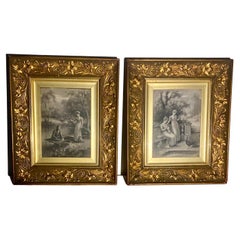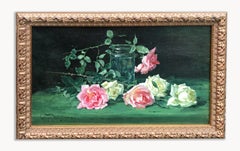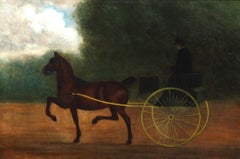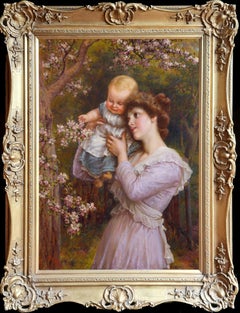Eva Hollyer
Antique 1890s British Paintings
Canvas
1910s Realist Still-life Paintings
Canvas, Oil
Early 1900s Realist Animal Paintings
Gold Leaf
Early 1900s Realist Abstract Paintings
Canvas, Oil
19th Century Figurative Paintings
Canvas, Oil
Eva Hollyer For Sale on 1stDibs
How Much is a Eva Hollyer?
Holly Miller for sale on 1stDibs
Holly Miller is an American abstract artist, whose paintings strive to merge the optical with the tactile through the language of abstraction. She lives and works in Brooklyn, NY. Communication through the touch (body language) has inspired her tactile abstract paintings. Miller's palette echoes the tones and hues of Italian industrial design from the 60s and 70s, while her shapes recall architecture and urban structures. Her work has a huge affinity to Fontana's physical approach to his paintings and Burri's tactile manipulation of the painting's surface. Ellsworth Kelly's bold shapes and colors have resonated with her on a purely optical level. Agnes Martin’s subtle, quiet, repetitive drawn lines, Fred Sandback’s strong architectural, minimal fiber lines drawn in space, Eva Hesse’s emotionally loaded structured webs, Richard Tuttle’s quirky and fresh drawings and humble objects, Bridget Riley's dynamic, optical compositions have left a deep impression on Miller, inspiring her to carve out her own voice in Abstraction. By combining repeated threaded lines with geometric shapes of color, her work conveys many dichotomies: reductive painting and craft, illusion and material, warm and cool, absence and presence, masculine and feminine, bold and subtle, perfection and imperfection. The paintings have a physicality that is described through the monochromatic brush strokes and the punctured holes of the drawn lines that pierce the surface of the canvas, yet from a distance, they appear to be flat and suggest a fine line drawing. As one approaches the paintings an element of surprise is revealed and one is inspired to look closer and question the original assumption or expectation.
Finding the Right Abstract-paintings for You
Bring audacious experiments with color and textures to your living room, dining room or home office. Abstract paintings, large or small, will stand out in your space, encouraging conversation and introducing a museum-like atmosphere that’s welcoming and conducive to creating memorable gatherings.
Abstract art has origins in 19th-century Europe, but it came into its own as a significant movement during the 20th century. Early practitioners of abstraction included Wassily Kandinsky, although painters were exploring nonfigurative art prior to the influential Russian artist’s efforts, which were inspired by music and religion. Abstract painters endeavored to create works that didn’t focus on the outside world’s conventional subjects, and even when artists depicted realistic subjects, they worked in an abstract mode to do so.
In 1940s-era New York City, a group of painters working in the abstract mode created radical work that looked to European avant-garde artists as well as to the art of ancient cultures, prioritizing improvisation, immediacy and direct personal expression. While they were never formally affiliated with one another, we know them today as Abstract Expressionists.
The male contingent of the Abstract Expressionists, which includes Jackson Pollock, Willem de Kooning and Robert Motherwell, is frequently cited in discussing leading figures of this internationally influential postwar art movement. However, the women of Abstract Expressionism, such as Helen Frankenthaler, Lee Krasner, Joan Mitchell and others, were equally involved in the art world of the time. Sexism, family obligations and societal pressures contributed to a long history of their being overlooked, but the female Abstract Expressionists experimented vigorously, developed their own style and produced significant bodies of work.
Draw your guests into abstract oil paintings across different eras and countries of origin. On 1stDibs, you’ll find an expansive range of abstract paintings along with a guide on how to arrange your wonderful new wall art.
If you’re working with a small living space, a colorful, oversize work can create depth in a given room, but there isn’t any need to overwhelm your interior with a sprawling pièce de résistance. Colorful abstractions of any size can pop against a white wall in your living room, but if you’re working with a colored backdrop, you may wish to stick to colors that complement the decor that is already in the space. Alternatively, let your painting make a statement on its own, regardless of its surroundings, or group it, gallery-style, with other works.




